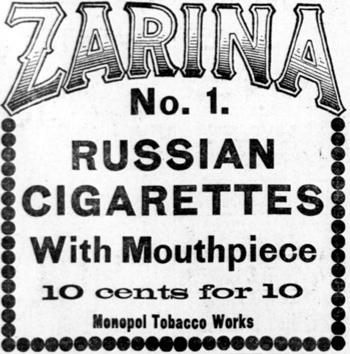California
NORTHERN CALIFORNIA: ° Alameda: ° Berkeley ° Oakland
Contra Costa County: ° Crockett, ° Martinez ° Port Costa
Marin County: ° Point Reyes, ° San Rafael (China Camp), ° Sausalito, ° Tiburon
° Mendocino ° Sacramento
San Francisco (City and County)
Solano: ° Benicia (St. Paul's Church), ° Vallejo,° Mare Island
Sonoma: ° Petaluma ° Fort Ross
CENTRAL & SOUTHERN CALIFORNIA: ° Long Beach ° Los Angeles ° Monterey County ° San Diego County ° Santa Barbara ° Santa Monica ° The Channel Islands
Fort Ross

The Russian-American Company
The Russian-American Company was established by Czar Paul I, July 8, 1799, with de facto political authority and a monopoly of trade in Russia's North American possessions, principally Alaska. It was administered by a board of directors in St. Petersburg, with control of affairs in Alaska by appointed governors general. Alaska headquarters of the company was established at Sitka in 1799.
Except for the period 1802-4, when an Indian revolt drove out the Russians, Sitka remained company headquarters until Alaska was sold to the United States in 1867. Under terms of a treaty concluded March 30, 1867 (15 Stat. 541), "any Government archives, papers, and documents relative to the territory and dominion aforesaid, which may now be existing there," were transferred to the United States.
In 1812 a company outpost was settled at Fort Ross in present-day California.
Agreements with the United States, Spain, and Great Britain (c. 1824) confirmed the company s control of North American territory north of 54° 40' but, after commercial and political rivalries with Great Britain increased and revenues from the colonies decreased, Russia decided to sell its holdings in America and refused to renew the company s charter, which expired in 1862.

The population of the colony at Fort Ross consisted of a multicultural, multiethnic community brought together by czarist Russia’s mercantile fur acquisition and trading enterprise, the Russian-American Company. At Fort Ross, the community was divided into four ethnic residential areas:
- Upper level Russian management lived within the stockade.
- Ethnic Russians and Creoles (people who were the offspring of Russian/Native unions) of lower standing lived in a village of small houses with kitchen gardens. This village was located outside the stockade to the west.
- A Native Alaskan village of small wood or plank houses and possibly some semi-subterranean dwellings was located on the ocean bluff in front of the stockade. Here resided single Native Alaskan men, some Native Alaskan families, and other households consisting of Native Alaskan men and Kashaya and Miwok women and their children.
- The Kashaya also lived in a small village northeast of the stockade and in many other villages in the coastal hills above Ross. By far the most populous group was Native Alaskan.
In 1841, Russian colonists gave up their enterprise and sold the colony to pioneer John Sutter, who transported its equipment and supplies to his own fort in Sacramento. The area served as ranch land for more than 60 years, until California designated it as a state historic park in 1906. Within a weathered stockade built from redwood timber are barracks, officers’ quarters, and a small, unadorned Russian Orthodox chapel with a simple belfry. (The only original building from the Russian era is the home of the colony’s last manager, Alexander Rotchev, a one-story family dwelling stocked with reconstructions of period furniture and housewares.)
Although Fort Ross had the appearance of a military installation, it was never involved in warfare. For three decades, Russian colonists lived and intermarried with Native Americans, traded with Spain and the United States, and made a living through agriculture, otter-hunting and shipbuilding. The area was peaceful; it was the farthest outpost for the Russians and the farthest outpost for the Spanish.”
May 9, 1868, Daily Alta California, San Francisco, California
Arrived: Schooner J. A. Burr, Johnson, 9 hours from Fort Ross; lumber, to Preston & McKinnon. Passengers from Fort Ross: Thomas Long.
October 15, 1891, San Francisco Call, San Francisco, California, U.S.A.
Arrival of Steamers
The following steamers came in last night: Louis Olsen from Fort Ross, Lucky Lowe from Fort Bragg, Bonita from Port Harford, and Coos Bay from Amesport.
June 16, 1894, San Francisco Call, San Francisco, California, U.S.A.
Scenes at Fort Ross
The beach and old chapel at Fort Ross are very interesting to look at, and in part seventeen of "Picturesque California" there are fine pictures of both . . . Part eighteen of "Picturesque California" contains a fine reproduction from photographs of this quaint old Russian stronghold.
March 27, 1899, Los Angeles Herald, Los Angeles, California, U.S.A.
Successful Sealing
San Francisco, March 26. The British sealing schooner Geneva, which for the past six weeks has been cruising off the California coast, has put into Fort Ross for water. As the result of her short cruise, she has 1243 on board.
Although the revolution of 1917 marked the end of the imperial Russian regime, consulates loyal to that regime continued to function in certain U.S. and Canadian cities until the late 1920's with the financial support of the U.S. and Canadian Governments.
A History of the
Russian-American Company
P.A. Tikhmenev
"The Russian-American Company was chartered by the Russian government in 1799 to conduct monopoly trading in the Aleutians and Alaska and played a major role in the affairs of the North Pacific during the next half century. This translation of Tikhmenev's comprehensive history of the Company, acknowledged by scholars as a fundamental source on Russian-American history, will be indispensable to further study in that field. The original Russian text was written, at Company behest, a few years before the sale of Alaska to the United States and the liquidation of the Company. Undertaken to "glorify" the activities of the Company, in the mistaken hope of winning a renewal of the monopoly charter, Tikhmenev's history is based on documents then in Company archives, but later destroyed.
Russian America: the Great Alaskan Venture 1741 - 1867
Hector Chevigny
The Wreck of the Neva As Narrated in the Description of the Unfortunate Shipwreck of the Frigate Neva of the Russian-American Company
VN Berkh
and The Loss of the Russian-American Company Ship Neva on the Northwestern Shore of America, Near Cape Edgecumbe on the 9th of January, 1813
V. M. Golovnin
Alaska Historical Society
Sitka Historical Society (1979)
English-Russian,
Russian-English Dictionary
Kenneth Katzner
The Story of Sitka: The Historic Outpost of the Northwest Coast. The chief factory of the Russian American Company
Clarence Leroy Andrews

Dmitrii Nagishkin, Darlene Geis
Thirty-one traditional tales from the far eastern part of Russia tell of life along the banks of the Amur River.
This is one of my all-time favorite books. I have a first edition and while I've parted with many things, never this! The art is alive. It is absolutely beautiful.
Illustrations can be viewed at Cizgili Masalli's blog















 Copyright ~ 1998-2018.
Copyright ~ 1998-2018. 